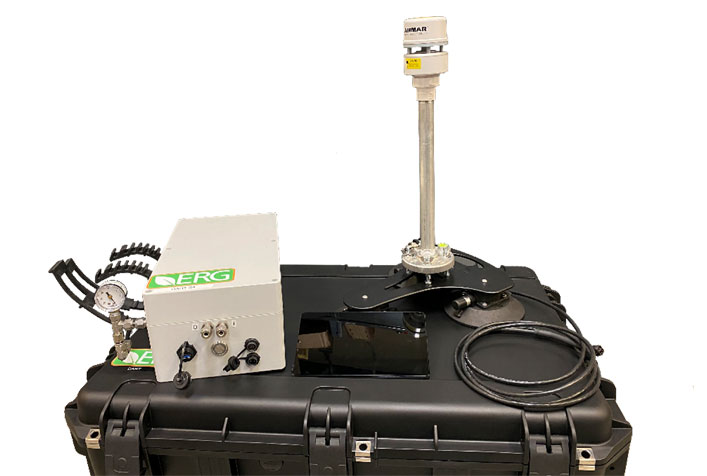ERG-DART Innovative Mobile VOC Monitoring System

Project Brief
The Challenge
Sampling and monitoring emissions of air pollutants from industrial sites can be costly and exhaustive, requiring expensive analysis and equipment and many days of time by highly trained staff. Geospatial monitoring (i.e., sampling and monitoring on a mobile platform that tracks location) is typically an even more exhaustive challenge to budgets and staff.
ERG's Solution
To provide the U.S. Environmental Protection Agency and other ERG clients with an affordable alternative, ERG developed DART (Data Acquisition in Real Time), a low-cost, portable, and easy-to-operate mobile monitoring system that can be rapidly deployed anywhere in the world and adapted to any transportation vehicle. DART can detect emissions at multiple fixed locations and transported around a neighborhood or other area of concern to geospatially detect and map emissions throughout that area. This innovative system integrates three important functions:
- Pollutant monitoring. DART monitors real-time total volatile organic compounds (TVOC) measurements at 1 hertz and plots the data live over a graphical user interface, providing real-time visualization on a display tablet.
- Sampling. In parallel, with the push of a button, DART can acquire evacuated canister samples to enable verification of TVOC readings and speciation of constituents by EPA Compendium Method TO-15/TO-15A analysis.
- Geospatial monitoring and analysis. DART incorporates an integrated weather station that measures wind speed, wind direction, pressure, relative humidity, and temperature to further pinpoint the source of TVOC plumes. DART also logs GPS coordinates so that the user can overlay a graphical representation on a satellite image to display TVOC and wind direction along the route it was driven.
ERG project teams deploy DART to help EPA’s Office of Civil Enforcement with its investigations. For example, we used DART in a port area to determine which of several potential sources EPA had targeted was emitting the nuisance odors that were affecting nearby communities, including a hospital. By using DART to monitor suspect facilities on multiple days to obtain data on wind patterns, climates, and operation levels, we were able to demonstrate that all fugitive VOC odors and measured plumes were originating from a batch asphalt plant and few to no odors were detected at other potential sources. In another case, by using DART to monitor around an underserved community, we detected a plume of VOCs exceeding 3 parts per million from a dryer vent at a facility that was not listed as a target for inspection, and we then used a FLIR (Forward Looking Infrared) camera to visually document the VOC plume exiting the facility. ERG provided the data, visualization, and FLIR video to state inspectors for follow up.
Client
Developed by ERG for use on EPA and other client projects